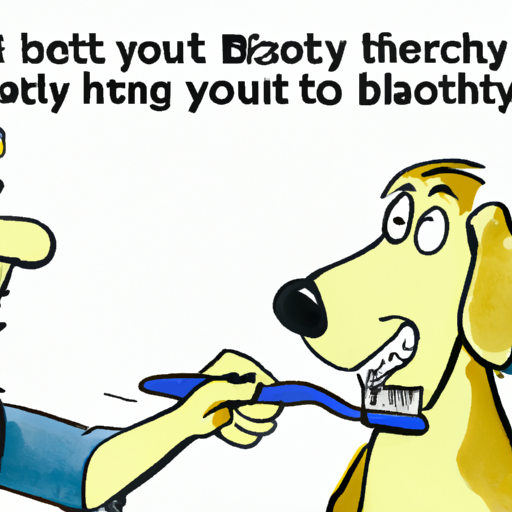Introduction
Imagine this: You’re lovingly petting your furry friend, and as they lean in to give you a sloppy kiss, you’re hit with a wave of foul-smelling breath. You part their lips, only to discover their teeth are covered in a yellowish substance. That, my friend, is plaque, and it’s time to take action.
Understanding Canine Dental Health
Firstly, you need to understand what you’re dealing with. Plaque is a sticky film that builds up on your dog’s teeth, often leading to tartar, gum disease, and bad breath. Like humans, dogs are also prone to dental issues which can lead to serious health problems if left untreated.
- Plaque: A sticky, colorless film of bacteria that forms on teeth.
- Tartar: Hardened plaque that has been left on the teeth for some time.
- Gingivitis: Inflammation of the gums due to plaque buildup.
- Periodontitis: Advanced gum disease that can lead to tooth loss.
Regular Brushing is Key
The most effective way to remove plaque from your dog’s teeth is through regular brushing. You wouldn’t skip brushing your own teeth, so why would you neglect your pet’s oral health?
- Choose the Right Tools: Start with a dog-friendly toothbrush and toothpaste. Never use human toothpaste as it contains ingredients that can be harmful to dogs.
- Make it a Routine: Aim to brush your dog’s teeth daily, or at the very least, thrice a week.
- Take it Slow: Let your dog get used to the process. Start by letting them taste the toothpaste, then gradually work up to brushing.
Dental Treats and Chews
While brushing is the gold standard, dental treats and chews can be a good supplementary measure.
| Type | Benefits |
|---|---|
| Dental Chews | Can help scrape off plaque and tartar |
| Dental Treats | May contain ingredients that promote dental health |
| Chew Toys | Can promote chewing which naturally cleans teeth |
Remember, these should not replace brushing but can be a helpful addition to your dog’s dental care routine.
Professional Cleanings
Sometimes, despite your best efforts, your dog may need a professional cleaning. This is typically done under anesthesia and includes a thorough scaling and polishing of the teeth. Always consult with your vet to see if this is a necessary step for your pet.
FAQs
Q: How often should I brush my dog’s teeth?
A: Ideally, daily. However, if this isn’t feasible, aim for at least 3 times a week.
Q: Can I use human toothpaste to brush my dog’s teeth?
A: No, human toothpaste can be harmful to dogs.
Q: How often should my dog have a professional cleaning?
A: This depends on your dog’s oral health. Consult with your vet for the best advice.
Your dog’s dental health is just as important as their physical health. With some patience and dedication, you can ensure your dog’s teeth stay clean and healthy, preventing serious health issues down the line.



